FiL
-
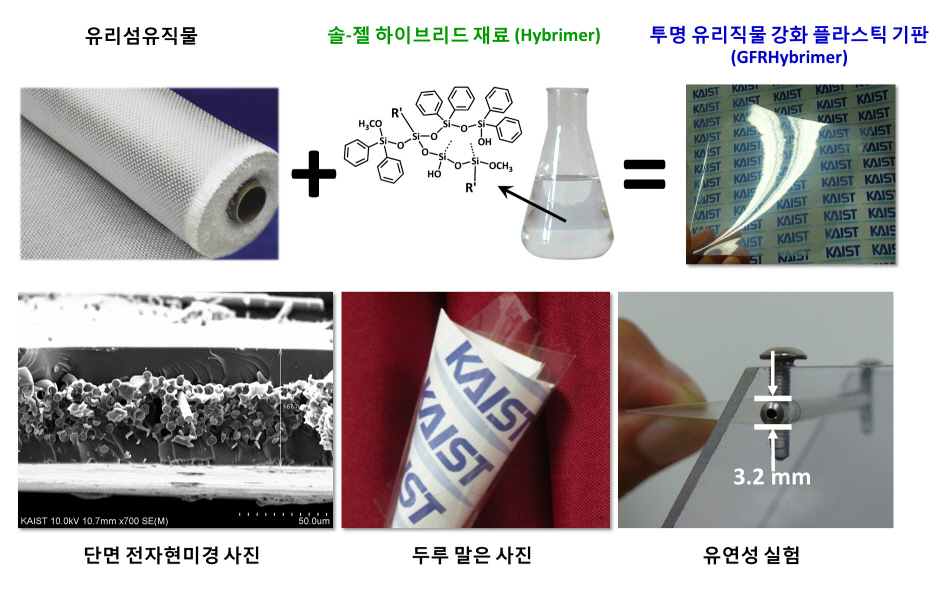 KAIST developed a plastic film board less sensitive to heat.
The research result was made the cover of magazine, Advanced Materials and is accredited to paving the way to commercialize flexible display screens and solar power cells.
Transparent plastic and glass cloths, which have a limited thermal expansion needed for the production of flexible display screens and solar power cells, were developed by Korean researchers.
The research, led by KAIST’s Professor Byoung-Soo Bae, was funded by the Engineering Research Center under the initiative of the Ministry of Education, Science and Technology and the National Research Foundation. The research result was printed as the cover paper of ‘Advanced Materials’ which is the leading magazine in the field of materials science.
Professor Bae’s team developed a hybrid material with the same properties as fiber glass. With the material, they created a transparent, plastic film sheet resistant to heat. Transparent plastic film sheets were used by researchers all over the world to develop devices such as flexible displays or solar power cells that can be fit into various living spaces. However, plastic films are heat sensitive and tend to expand as temperature increases, thereby making it difficult to produce displays or solar power cells.
The new transparent, plastic film screen shows that heat expansion index (13ppm/oC) similar to that of glass fiber (9ppm/oC) due to the presence of glass fibers; its heat resistance allows to be used for displays and solar power cells over 250oC.
Professor Bae’s team succeeded in producing a flexible thin plastic film available for use in LCD or AMOLED screens and thin solar power cells.
Professor Bae commented, “Not only the newly developed plastic film has superior qualities, compared to the old models, but also it is cheap to produce, potentially bringing forward the day when flexible displays and solar panels become commonplace. With the cooperation of various industries, research institutes and universities, we will strive to improve the existing design and develop it further.”
2011.01.05 View 14775
KAIST developed a plastic film board less sensitive to heat.
The research result was made the cover of magazine, Advanced Materials and is accredited to paving the way to commercialize flexible display screens and solar power cells.
Transparent plastic and glass cloths, which have a limited thermal expansion needed for the production of flexible display screens and solar power cells, were developed by Korean researchers.
The research, led by KAIST’s Professor Byoung-Soo Bae, was funded by the Engineering Research Center under the initiative of the Ministry of Education, Science and Technology and the National Research Foundation. The research result was printed as the cover paper of ‘Advanced Materials’ which is the leading magazine in the field of materials science.
Professor Bae’s team developed a hybrid material with the same properties as fiber glass. With the material, they created a transparent, plastic film sheet resistant to heat. Transparent plastic film sheets were used by researchers all over the world to develop devices such as flexible displays or solar power cells that can be fit into various living spaces. However, plastic films are heat sensitive and tend to expand as temperature increases, thereby making it difficult to produce displays or solar power cells.
The new transparent, plastic film screen shows that heat expansion index (13ppm/oC) similar to that of glass fiber (9ppm/oC) due to the presence of glass fibers; its heat resistance allows to be used for displays and solar power cells over 250oC.
Professor Bae’s team succeeded in producing a flexible thin plastic film available for use in LCD or AMOLED screens and thin solar power cells.
Professor Bae commented, “Not only the newly developed plastic film has superior qualities, compared to the old models, but also it is cheap to produce, potentially bringing forward the day when flexible displays and solar panels become commonplace. With the cooperation of various industries, research institutes and universities, we will strive to improve the existing design and develop it further.”
2011.01.05 View 14775 -
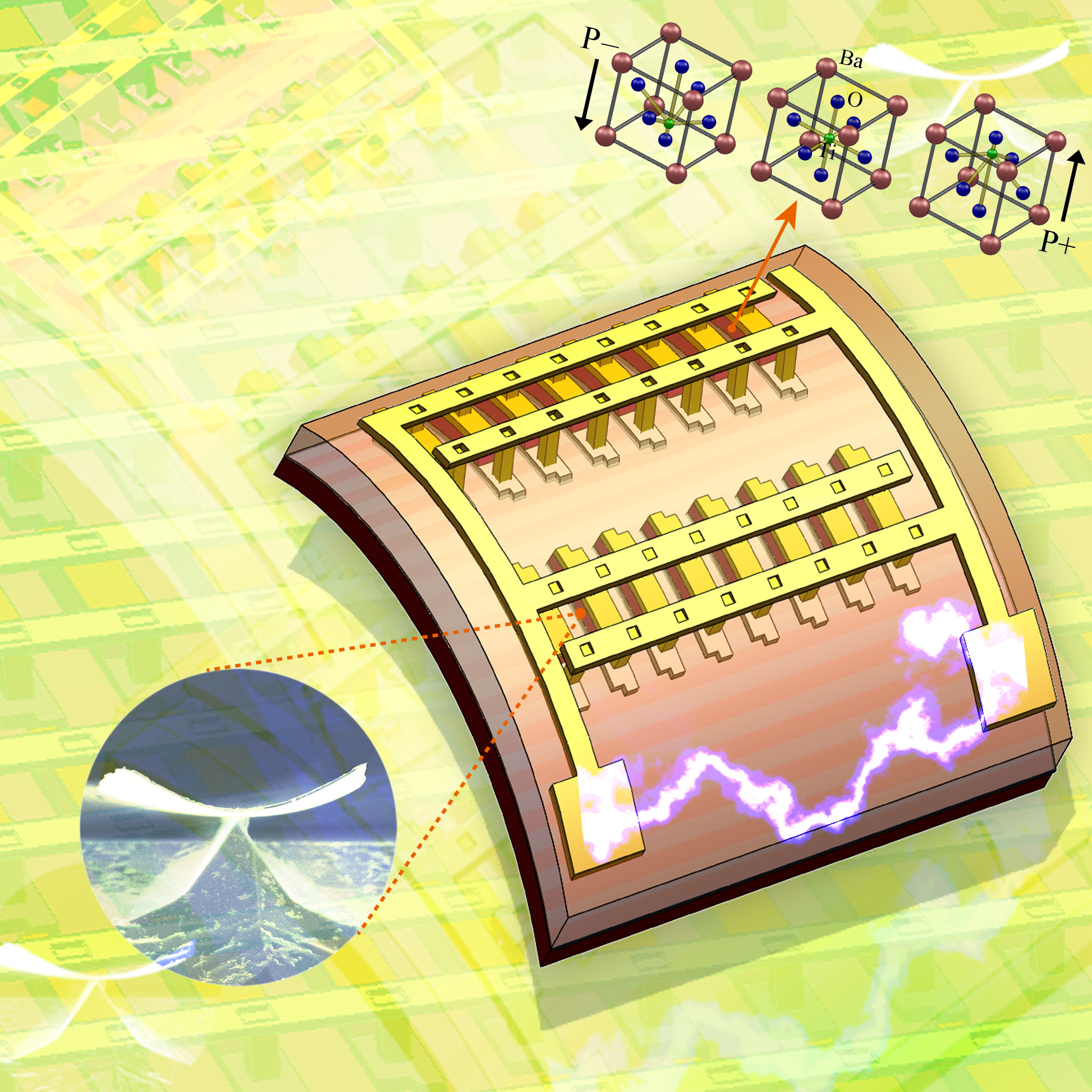 The KAIST & GIT team developed a power generation technology using bendable thin film nano-materials.
Figure description: Flexible thin film nanomaterials produce electricity.
Can a heart implanted micro robot operate permanently?
Can cell phones and tiny robots implanted in the heart operate permanently without having their batteries charged?
It might sound like science fiction, but these things seem to be possible in the near future. The team of Prof. Keon Jae Lee (KAIST, Dept. of Materials Science and Engineering) and Prof. Zhong Lin Wang (Georgia Institute of Technology, Dept. of Materials Science and Engineering) has developed new forms of highly efficient, flexible nanogenerator technology using the freely bendable piezoelectric ceramic thin film nano-materials that can convert tiny movements of the human body (such as heart beats and blood flow) into electrical energy.
The piezoelectric effect refers to voltage generation when pressure or bending strength is applied to piezoelectric materials. The ceramics, containing a perovskite structure, have a high piezoelectric efficiency. Until now, it has been very difficult to use these ceramic materials to fabricate flexible electronic systems due to their brittle property.
The research team, however, has succeeded in developing a bio-eco-friendly ceramic thin film nanogenerator that is freely bendable without breakdown.
Nanogenerator technology, a power generating system without wires or batteries, combines nanotechnology with piezoelectrics that can be used not only in personal mobile electronics but also in bio-implantable sensors or as an energy source for micro robots. Energy sources in nature (wind, vibration, and sound) and biomechanical forces produced by the human body (heart beats, blood flow, and muscle contraction/relaxation) can infinitely produce nonpolluting energy. (Nanogenerator produces electricity by external forces: http://www.youtube.com/watch?v=tvj0SsBqpBw)
Prof. Keon Jae Lee (KAIST) was involved in the first co-invention of “High Performance Flexible Single Crystal Electronics” during his PhD course at the University of Illinois at Urbana-Champaign. This nanogenerator technology, based on the previous invention, utilized the similar protocol of transferring ceramic thin film nano-materials on flexible substrates and produced voltage generation between electrodes.
Prof. Zhong Lin Wang (Georgia Tech, inventor of the nanogenerator) said, “This technology can be used to turn on an LED by slightly modifying circuits and operate touchable flexible displays. In addition, thin film nano-materials (‘barium titanate’) of this research have the property of both high efficiency and lead-free bio compatibility, which can be used in future medical applications.” This result is published in November online issue of ‘Nano Letters’ ACS journal.
<Video>
Youtube link: http://www.youtube.com/watch?v=tvj0SsBqpBw
Thin Film Nanogenerator produces electricity by external forces.
2010.11.23 View 15522
The KAIST & GIT team developed a power generation technology using bendable thin film nano-materials.
Figure description: Flexible thin film nanomaterials produce electricity.
Can a heart implanted micro robot operate permanently?
Can cell phones and tiny robots implanted in the heart operate permanently without having their batteries charged?
It might sound like science fiction, but these things seem to be possible in the near future. The team of Prof. Keon Jae Lee (KAIST, Dept. of Materials Science and Engineering) and Prof. Zhong Lin Wang (Georgia Institute of Technology, Dept. of Materials Science and Engineering) has developed new forms of highly efficient, flexible nanogenerator technology using the freely bendable piezoelectric ceramic thin film nano-materials that can convert tiny movements of the human body (such as heart beats and blood flow) into electrical energy.
The piezoelectric effect refers to voltage generation when pressure or bending strength is applied to piezoelectric materials. The ceramics, containing a perovskite structure, have a high piezoelectric efficiency. Until now, it has been very difficult to use these ceramic materials to fabricate flexible electronic systems due to their brittle property.
The research team, however, has succeeded in developing a bio-eco-friendly ceramic thin film nanogenerator that is freely bendable without breakdown.
Nanogenerator technology, a power generating system without wires or batteries, combines nanotechnology with piezoelectrics that can be used not only in personal mobile electronics but also in bio-implantable sensors or as an energy source for micro robots. Energy sources in nature (wind, vibration, and sound) and biomechanical forces produced by the human body (heart beats, blood flow, and muscle contraction/relaxation) can infinitely produce nonpolluting energy. (Nanogenerator produces electricity by external forces: http://www.youtube.com/watch?v=tvj0SsBqpBw)
Prof. Keon Jae Lee (KAIST) was involved in the first co-invention of “High Performance Flexible Single Crystal Electronics” during his PhD course at the University of Illinois at Urbana-Champaign. This nanogenerator technology, based on the previous invention, utilized the similar protocol of transferring ceramic thin film nano-materials on flexible substrates and produced voltage generation between electrodes.
Prof. Zhong Lin Wang (Georgia Tech, inventor of the nanogenerator) said, “This technology can be used to turn on an LED by slightly modifying circuits and operate touchable flexible displays. In addition, thin film nano-materials (‘barium titanate’) of this research have the property of both high efficiency and lead-free bio compatibility, which can be used in future medical applications.” This result is published in November online issue of ‘Nano Letters’ ACS journal.
<Video>
Youtube link: http://www.youtube.com/watch?v=tvj0SsBqpBw
Thin Film Nanogenerator produces electricity by external forces.
2010.11.23 View 15522 -
 KAIST offers a new course on three-dimensional movies.
Registration for the class ends on February 18, 2010.
The Graduate School of Culture Technology (GSCT) at KAIST created a special class entitled “Master Class for Three-Dimensional (3D) Film Production.” Applications for the class will be accepted by Thursday, February 18, 2010.
The latest 3D movie, AVATAR, has become very popular upon its release in late 2009: An overwhelming visual and sensory experience provided by a 3D technology gave viewers real life feelings about a virtual reality built in the movie. People can almost reach out and touch an explosion, components of machines, and aliens appeared on the screen.
“In response to growing interests in 3D movies, KAIST GSCT established a special session to teach students an overall process of 3D film production,” said Kwang-Yeon Won, Dean of GSTC. He also stressed that the 3D technology would serve as catalysts in developing the next generation of visual industry in the 21st century.
“We have actively engaged in the development of 3D core technology and application contents. This class will be the first of our initiatives to launch a series of educational programs on 3D technology.”
The class offers a complete road of 3D film production: an overview of stereography for 3D movies from planning, shooting, to post production. Many of film professionals (i.e., Director Yang-Hyun Choi and Shooting Director Byung-Il Kim), who are currently working in the field, will join the class so that students can have an opportunity to learn all ends of 3D film industry, both in terms of theoretical knowledge and practical work experience.
The class is open to undergraduate/graduate students and to the public. For details, please refer to the website of http://ct.kaist.ac.kr/stereoclass2010 or call at 02-380-3698 (Industry-University Research Collaboration Center at KAIST Graduate School of Culture Technology).
2010.02.17 View 11251
KAIST offers a new course on three-dimensional movies.
Registration for the class ends on February 18, 2010.
The Graduate School of Culture Technology (GSCT) at KAIST created a special class entitled “Master Class for Three-Dimensional (3D) Film Production.” Applications for the class will be accepted by Thursday, February 18, 2010.
The latest 3D movie, AVATAR, has become very popular upon its release in late 2009: An overwhelming visual and sensory experience provided by a 3D technology gave viewers real life feelings about a virtual reality built in the movie. People can almost reach out and touch an explosion, components of machines, and aliens appeared on the screen.
“In response to growing interests in 3D movies, KAIST GSCT established a special session to teach students an overall process of 3D film production,” said Kwang-Yeon Won, Dean of GSTC. He also stressed that the 3D technology would serve as catalysts in developing the next generation of visual industry in the 21st century.
“We have actively engaged in the development of 3D core technology and application contents. This class will be the first of our initiatives to launch a series of educational programs on 3D technology.”
The class offers a complete road of 3D film production: an overview of stereography for 3D movies from planning, shooting, to post production. Many of film professionals (i.e., Director Yang-Hyun Choi and Shooting Director Byung-Il Kim), who are currently working in the field, will join the class so that students can have an opportunity to learn all ends of 3D film industry, both in terms of theoretical knowledge and practical work experience.
The class is open to undergraduate/graduate students and to the public. For details, please refer to the website of http://ct.kaist.ac.kr/stereoclass2010 or call at 02-380-3698 (Industry-University Research Collaboration Center at KAIST Graduate School of Culture Technology).
2010.02.17 View 11251 -
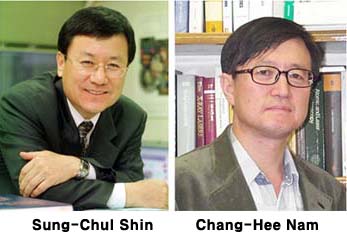 Two KAIST Professors Elected Fellows of APS
Profs. Sung-Chul Shin and Chang-Hee Nam of the Department of Physics, KAIST, have recently been elected the 2009 fellows of the American Physical Society (APS), university officials said on Tuesday (Dec. 2).
The APS fellowship is a prestigious recognition of the two professors" outstanding academic achievements in the field of physics, the officials said. The selection criteria are known to be extremely stringent and only a small fraction of APS members become fellows.
Prof. Shin was cited for his pioneering contributions to the understanding of magnetization reversal dynamics, in particular critical scaling behavior of Barkhausen avalanches of 2D ferromagnets, and discovery of novel magnetic thin films and multilayers for high-density data storage.
Prof. Nam was recognized for his contributions to the theory and experiments of physical processes of high harmonic generation for the development of attosecond coherent x-ray sources and related femtosecond laser technology.
The American Physical Society, founded in 1899, is the world"s second largest organization of physicists, behind the Deutsche Physikalische Gesellschaft. It has 46,000 members across the world.
2008.12.04 View 14663
Two KAIST Professors Elected Fellows of APS
Profs. Sung-Chul Shin and Chang-Hee Nam of the Department of Physics, KAIST, have recently been elected the 2009 fellows of the American Physical Society (APS), university officials said on Tuesday (Dec. 2).
The APS fellowship is a prestigious recognition of the two professors" outstanding academic achievements in the field of physics, the officials said. The selection criteria are known to be extremely stringent and only a small fraction of APS members become fellows.
Prof. Shin was cited for his pioneering contributions to the understanding of magnetization reversal dynamics, in particular critical scaling behavior of Barkhausen avalanches of 2D ferromagnets, and discovery of novel magnetic thin films and multilayers for high-density data storage.
Prof. Nam was recognized for his contributions to the theory and experiments of physical processes of high harmonic generation for the development of attosecond coherent x-ray sources and related femtosecond laser technology.
The American Physical Society, founded in 1899, is the world"s second largest organization of physicists, behind the Deutsche Physikalische Gesellschaft. It has 46,000 members across the world.
2008.12.04 View 14663 -
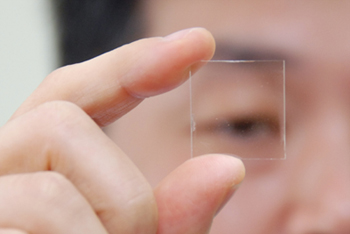 Home-Grown Transparent Thin Film Transistor Developed
KAIST, Aug. 6, 2008 -- A KAIST research team led by Profs. Jae-Woo Park and Seung-Hyup Yoo of the Electrical Engineering Division has developed a home-grown technology to create transparent thin film transistor using titanium dioxide., university authorities said.The KAIST team made the technological advance in collaboration with the LCD Division of Samsung Electronics and the Techno Semichem Co., a local LCD equipment maker. Transparent thin film transistor continues to enjoy a wealth of popularity and intensive research interest since it is used in producing operating circuits including transparent display, active-matrix OLED (AMOLED) display and flexible display.
The new technology is significant in that it is based on a titanium dioxide, the first such attempt in the world, while the technologies patented by the United States and Japan are based on ZnO.
Researchers will continue to work on securing technological reliability and developing a technology to mass-produce in a large-scale chemical vapor deposition equipment for the next couple of years.
"The development of technology to produce transparent thin film transistor will help Korean LCD makers reduce its dependence on foreign technologies, as well as maintain Korea"s status as a leader of the world"s display industry," said Prof. Park.
KAIST has applied for local patent registration of the technology and the process is expected to complete by this October or November. International patents have been also applied for in the U.S., Japan and Europe.
The new technology was introduced in the latest edition of the Electron Device Letters, a journal published by the Institute of Electrical and Electronics Engineers or IEEE, a New York-based international non-profit, professional organization for the advancement of technology related to electricity. It will be presented at the International Display Workshop 2008 on Dec. 5 in Niigata, Japan.
2008.08.07 View 15805
Home-Grown Transparent Thin Film Transistor Developed
KAIST, Aug. 6, 2008 -- A KAIST research team led by Profs. Jae-Woo Park and Seung-Hyup Yoo of the Electrical Engineering Division has developed a home-grown technology to create transparent thin film transistor using titanium dioxide., university authorities said.The KAIST team made the technological advance in collaboration with the LCD Division of Samsung Electronics and the Techno Semichem Co., a local LCD equipment maker. Transparent thin film transistor continues to enjoy a wealth of popularity and intensive research interest since it is used in producing operating circuits including transparent display, active-matrix OLED (AMOLED) display and flexible display.
The new technology is significant in that it is based on a titanium dioxide, the first such attempt in the world, while the technologies patented by the United States and Japan are based on ZnO.
Researchers will continue to work on securing technological reliability and developing a technology to mass-produce in a large-scale chemical vapor deposition equipment for the next couple of years.
"The development of technology to produce transparent thin film transistor will help Korean LCD makers reduce its dependence on foreign technologies, as well as maintain Korea"s status as a leader of the world"s display industry," said Prof. Park.
KAIST has applied for local patent registration of the technology and the process is expected to complete by this October or November. International patents have been also applied for in the U.S., Japan and Europe.
The new technology was introduced in the latest edition of the Electron Device Letters, a journal published by the Institute of Electrical and Electronics Engineers or IEEE, a New York-based international non-profit, professional organization for the advancement of technology related to electricity. It will be presented at the International Display Workshop 2008 on Dec. 5 in Niigata, Japan.
2008.08.07 View 15805 -
 KAIST Professor Named International Research Grant Reviewer
Prof. Kwang-Hyun Cho of the Department of Bio and Brain Engineering, KAIST, was appointed as a research grant review committee member of the international Human Frontier Science Program (HFSP) for 2008-2009, university authorities reported.
The HFSP is a funding agency that supports international collaboration in interdisciplinary, basic research in the life sciences. It was initiated in 1989 by G7 countries as the sole funding program for international researches in neuroscience and molecular biology. The HFSP now has a membership of 35 countries and Korea joined the program in 2004. Prof. Cho will be responsible for reviewing grant applications in the field of systems biology.
Prof. Cho received B.S., M.S. and Ph.D. degrees in electrical engineering from KAIST in 1993, 1995, and 1998, respectively. He has been working as a director of the KAIST Institute for the BioCentury and KAIST"s Laboratory for Systems Biology and Bio-Inspired Engineering. He has been serving on editorial advisory boards of various international science journals, including Systems and Synthetic Biology (Springer, Netherlands, from 2006), BMC Systems Biology (BMC, London, U.K., from 2007) and Gene Regulation and Systems Biology (Libertas Academica, New Zealand, from 2007).
He is a senior member of the Engineering in Medicine and Biology Society (EMBS) affiliated with the Institute of Electronics and Electrical Engineers (IEEE). His research interests cover the areas of systems science with bio-medical applications, especially systems biology and bio-inspired engineering based on molecular systems biology.
2008.07.18 View 19202
KAIST Professor Named International Research Grant Reviewer
Prof. Kwang-Hyun Cho of the Department of Bio and Brain Engineering, KAIST, was appointed as a research grant review committee member of the international Human Frontier Science Program (HFSP) for 2008-2009, university authorities reported.
The HFSP is a funding agency that supports international collaboration in interdisciplinary, basic research in the life sciences. It was initiated in 1989 by G7 countries as the sole funding program for international researches in neuroscience and molecular biology. The HFSP now has a membership of 35 countries and Korea joined the program in 2004. Prof. Cho will be responsible for reviewing grant applications in the field of systems biology.
Prof. Cho received B.S., M.S. and Ph.D. degrees in electrical engineering from KAIST in 1993, 1995, and 1998, respectively. He has been working as a director of the KAIST Institute for the BioCentury and KAIST"s Laboratory for Systems Biology and Bio-Inspired Engineering. He has been serving on editorial advisory boards of various international science journals, including Systems and Synthetic Biology (Springer, Netherlands, from 2006), BMC Systems Biology (BMC, London, U.K., from 2007) and Gene Regulation and Systems Biology (Libertas Academica, New Zealand, from 2007).
He is a senior member of the Engineering in Medicine and Biology Society (EMBS) affiliated with the Institute of Electronics and Electrical Engineers (IEEE). His research interests cover the areas of systems science with bio-medical applications, especially systems biology and bio-inspired engineering based on molecular systems biology.
2008.07.18 View 19202 -
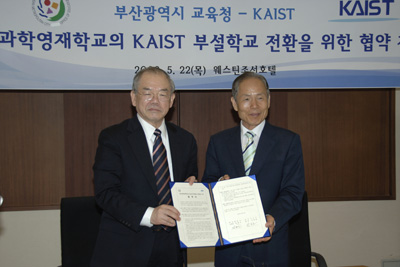 Korea Science Academy to Be Affiliated with KAIST
The Korea Science Academy, a state-run science high school located in the southeastern port city of Busan, will be converted to an affiliated school of KAIST as of March 1, 2009, university authorities said on Thursday (May 22).
The memorandum of understanding for the switchover was signed by KAIST President Nam-Pyo Suh, Dong-Geun Seol, superintendent of the Busan Metropolitan City and Jang-Hyuk Kwon, principal of the Korea Science Academy, at Seoul"s Westin Chosun Hotel Thursday morning.
When the switchover comes into effect, the principal of the high school will be appointed by the president of KAIST. Administrative details will be decided by a working-level committee consisting of delegates from the KAIST, the Office of Education of the Busan Metropolitan City and the Korea Science Academy.
The Korea Science Academy was established in 1991 to provide strengthened science courses for gifted students to prepare them for careers in science and technology. The school currently has an enrollment of 428 students and 45 classroom teachers.
2008.05.22 View 13653
Korea Science Academy to Be Affiliated with KAIST
The Korea Science Academy, a state-run science high school located in the southeastern port city of Busan, will be converted to an affiliated school of KAIST as of March 1, 2009, university authorities said on Thursday (May 22).
The memorandum of understanding for the switchover was signed by KAIST President Nam-Pyo Suh, Dong-Geun Seol, superintendent of the Busan Metropolitan City and Jang-Hyuk Kwon, principal of the Korea Science Academy, at Seoul"s Westin Chosun Hotel Thursday morning.
When the switchover comes into effect, the principal of the high school will be appointed by the president of KAIST. Administrative details will be decided by a working-level committee consisting of delegates from the KAIST, the Office of Education of the Busan Metropolitan City and the Korea Science Academy.
The Korea Science Academy was established in 1991 to provide strengthened science courses for gifted students to prepare them for careers in science and technology. The school currently has an enrollment of 428 students and 45 classroom teachers.
2008.05.22 View 13653 -
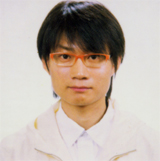 Ki-Won Lee Receives Best Student Paper Award
Ki-Won Lee Receives Best Student Paper Award
Ki-Won Lee, a doctoral student of Materials Science & Engineering, has received the Best Student Paper Award ‘Motorola Fellowship Award’ at 2007 Electronic Components and Technology Conference (ECTC).
Lee’s paper is about a new bonding process of anisotropic conductive film using ultrasonic wave, which applies ultrasonic wave, instead of thermal compression, at the room temperature to reduce the process time from ten to three seconds.
The recipients of Motorola Fellowship Award are selected by IEEE Components, Packaging and Manufacturing Technology Society, and Motorola awards special scholarship to recipients. The ECTC is the world’s largest yearly conference concerning electronic packaging technologies with more than 1,000 attendees and more than 300 presented papers.
2007.07.02 View 17937
Ki-Won Lee Receives Best Student Paper Award
Ki-Won Lee Receives Best Student Paper Award
Ki-Won Lee, a doctoral student of Materials Science & Engineering, has received the Best Student Paper Award ‘Motorola Fellowship Award’ at 2007 Electronic Components and Technology Conference (ECTC).
Lee’s paper is about a new bonding process of anisotropic conductive film using ultrasonic wave, which applies ultrasonic wave, instead of thermal compression, at the room temperature to reduce the process time from ten to three seconds.
The recipients of Motorola Fellowship Award are selected by IEEE Components, Packaging and Manufacturing Technology Society, and Motorola awards special scholarship to recipients. The ECTC is the world’s largest yearly conference concerning electronic packaging technologies with more than 1,000 attendees and more than 300 presented papers.
2007.07.02 View 17937 -
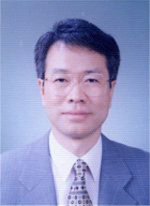 Prof. Whang Named Distinguished Database Profile by ACM SIGMOD
Professor Kyu-Young Whang of Computer Sciences has been named as Distinguished Database Profile (DDP) by Association for Computing Machinery Special Interest Group on Management Of Data (ACM SIGMOD).
DDP is a section of ACM SIGMOD Record that introduces researchers who have made significant global contributions in database field.
Thus far, about 20 researchers including Jeff Ullman and Jim Gray have been named as DDPs for their achievements such as establishment of new theories and technologies in database field, and Prof. Hwang is the first researcher named as DDP in the Asian-Pacific region.
Prof. Whang’s interview (directed by Marianne Winslett, Professor of UIUC, and Eric Bina, co-founder of Netscape) can be seen on http://www.sigmod.org/interviews and will be published at ACM SIGMOD Record in 2008.
2007.06.07 View 14270
Prof. Whang Named Distinguished Database Profile by ACM SIGMOD
Professor Kyu-Young Whang of Computer Sciences has been named as Distinguished Database Profile (DDP) by Association for Computing Machinery Special Interest Group on Management Of Data (ACM SIGMOD).
DDP is a section of ACM SIGMOD Record that introduces researchers who have made significant global contributions in database field.
Thus far, about 20 researchers including Jeff Ullman and Jim Gray have been named as DDPs for their achievements such as establishment of new theories and technologies in database field, and Prof. Hwang is the first researcher named as DDP in the Asian-Pacific region.
Prof. Whang’s interview (directed by Marianne Winslett, Professor of UIUC, and Eric Bina, co-founder of Netscape) can be seen on http://www.sigmod.org/interviews and will be published at ACM SIGMOD Record in 2008.
2007.06.07 View 14270 -
 Gold prize for Sungkoo Yeo and silver prize for Youngsik Kim at 'Samsung Electrics paper contest'
Gold prize for Sungkoo Yeo and silver prize for Youngsik Kim at ‘Samsung Electrics paper contest’
Sungkoo Yeo, doctorate student at the division of Electrical Engineering, and Youngsik Kim, doctorate students at the division of Mechanical Engineering, won gold and silver prizes respectively at ‘the 2nd Inside edge paper contest’ organized by Samsung Electronics.
Yeo, under the supervisory of Professor Youngse Kwon, won the glory of gold prize in recognition of his highly evaluated researches in the fields of silicon-based micro mold manufacturing technologies and fine shaping technologies revealed by his paper of ‘"Fabrication of Microlens array Using PDMS Replica Molding and Oxidized Porous Silicon Bulk Micromachining’.
Kim, under the supervisory of Professor Seungwoo Kim, also won the silver prize for his research performances over the thickness pattern measuring technologies of transparent thin film coated on the pattern of an opaque metal in the field of optical technology unveiled by his paper of "Dispersive white-light interferometry for in-line inspection of thin-film layers on patterned structures".
Inside Edge paper contest is an academic paper contest organized by Samsung Electronics to reveal the fresh ideas and potential technologies of the young talented.
2006.11.27 View 17131
Gold prize for Sungkoo Yeo and silver prize for Youngsik Kim at 'Samsung Electrics paper contest'
Gold prize for Sungkoo Yeo and silver prize for Youngsik Kim at ‘Samsung Electrics paper contest’
Sungkoo Yeo, doctorate student at the division of Electrical Engineering, and Youngsik Kim, doctorate students at the division of Mechanical Engineering, won gold and silver prizes respectively at ‘the 2nd Inside edge paper contest’ organized by Samsung Electronics.
Yeo, under the supervisory of Professor Youngse Kwon, won the glory of gold prize in recognition of his highly evaluated researches in the fields of silicon-based micro mold manufacturing technologies and fine shaping technologies revealed by his paper of ‘"Fabrication of Microlens array Using PDMS Replica Molding and Oxidized Porous Silicon Bulk Micromachining’.
Kim, under the supervisory of Professor Seungwoo Kim, also won the silver prize for his research performances over the thickness pattern measuring technologies of transparent thin film coated on the pattern of an opaque metal in the field of optical technology unveiled by his paper of "Dispersive white-light interferometry for in-line inspection of thin-film layers on patterned structures".
Inside Edge paper contest is an academic paper contest organized by Samsung Electronics to reveal the fresh ideas and potential technologies of the young talented.
2006.11.27 View 17131 -
 H.Y.Choi won BSPA
H.Y.Choi won BSPA
Hyun-Young Choi, Doctor’s course at the Lightwave Systems Research Laboratory (LSRL) of Department of Electrical Engineering of KAIST (Professor in charge Yoonchul Jung), won the Best Student Paper Awards (BSPA) in the Asia-Pacific Optical Communications 2006.
BSPA is awarded to the most prospective paper in the field of Optical Transmission, Switching, and Subsystems. Choi suggested an OSNR monitoring technique among performance monitoring techniques for the efficient maintenance and management of optical network in her paper. Her technique is based on a polarization-nulling method using the polarization features of optical signals. It employs polarization mode dispersion compensator and acousto optic tunable filter (AOTF) to prevent monitoring errors arising from polarization mode dispersion (PMD) and non-linear double refraction, which considerably improves the monitoring technique and makes it possible to demonstrate a technique proposed at ultra long haul network.
2006.10.16 View 14761
H.Y.Choi won BSPA
H.Y.Choi won BSPA
Hyun-Young Choi, Doctor’s course at the Lightwave Systems Research Laboratory (LSRL) of Department of Electrical Engineering of KAIST (Professor in charge Yoonchul Jung), won the Best Student Paper Awards (BSPA) in the Asia-Pacific Optical Communications 2006.
BSPA is awarded to the most prospective paper in the field of Optical Transmission, Switching, and Subsystems. Choi suggested an OSNR monitoring technique among performance monitoring techniques for the efficient maintenance and management of optical network in her paper. Her technique is based on a polarization-nulling method using the polarization features of optical signals. It employs polarization mode dispersion compensator and acousto optic tunable filter (AOTF) to prevent monitoring errors arising from polarization mode dispersion (PMD) and non-linear double refraction, which considerably improves the monitoring technique and makes it possible to demonstrate a technique proposed at ultra long haul network.
2006.10.16 View 14761